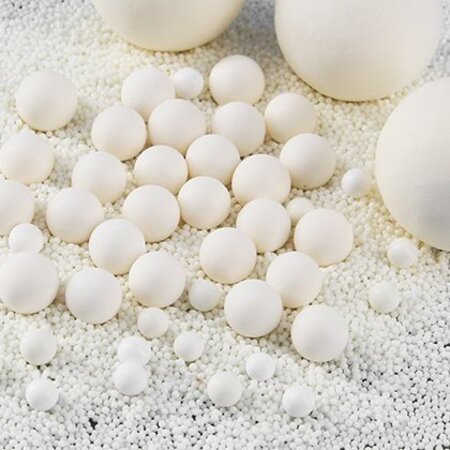In the precision-driven worlds of pharmaceuticals and advanced materials, contamination isn’t an option. 99% Alumina Ceramic Grinding Balls have emerged as a game-changing solution, enabling ultra-pure, efficient, and compliant material processing. Here’s why industries trust these advanced ceramic media.
Why Pharma & High-End Materials Demand 99% Alumina Ceramic Grinding Balls
Zero Contamination Guarantee
Unlike metal grinding media, 99% Al₂O₃ Ceramic Grinding Balls release no ions or residues during milling.
Critical for APIs (Active Pharmaceutical Ingredients) where trace metal contamination can compromise drug safety.

Chemical Inertness
Resists acids, alkalis, and organic solvents – ideal for the reduction of antibiotics, hormones, and precision medicine therapies.
Guarantees sensitive compounds do not undergo any reactions with other chemicals, maintaining molecular integrity.
Wear Resistance = Product Purity
With wear rates of less than 0.10%, these ceramic balls avoid effectively eroding debris contamination into high-value powder mixtures.
Removes expensive filtration processes after milling, such as in the preparation of injectable pharmaceuticals.
Pharmaceuticals and advanced materials of great importance use
✔ Pharmaceuticals
Oncology Drugs and Antibiotics: Attain micron/nano-scale particles to increase bioavailability levels.
Excipient Processing: Purity-free milling of lactose, cellulose, and calcium phosphate.
GMP Compliance: Ceramic Grinding Balls are compliant with leachables and extractables requirements from FDA/EMA.
✔ High End Materials
Bioceramics: Manufacturing ultra-pure zirconia/alumina powders enables the production of dental and orthopedic implants.
Semiconductor Precursor: Permits the grinding of high-purity SiC, GaN, or sapphire without metallic contamination.
Nanomaterials: Permits the uniform dispersion of carbon nanotubes (CNTs) and quantum dots.
Focus on Other Solutions Benefits
Criteria 99% Alumina Ceramic Balls Stainless Steel Balls
Contamination Risk none Iron/Nickel leaching ball contamination
Ball Contamination Chemical Resistance Exceptional (pH 1–14) Corrodes in acids
Wear Rate ≤0.10% 5–10%
Lifespan 5–8x longer Frequent replacement
Optimizing Performance: Critical Selection Factors
Size Matters:
Use Ø1–3mm balls for nano-grinding (e.g., lipid nanoparticles).
Ø5–10mm balls suit coarse API reduction.
Purity Grades:
99% Alumina: Cost-effective for most pharma applications.
99.5%+ Alumina: Essential for semiconductor-grade materials.
Processing Conditions:
Stable in -196°C (cryo-milling) to 1,000°C environments.
Compatible with dry/wet milling attritors or planetary ball mills.
Real-World Impact: Case Snapshots
Cancer Drug Production: A European lab reduced filtration costs by 40% after switching to alumina balls, eliminating iron contaminants.
Bioceramic Implants: A manufacturer achieved 99.98% density in zirconia-toughened alumina (ZTA) using 2mm alumina media.
Future Trends: Where Innovation Meets Demand
Gene Therapy: Demand for viral vector milling with zero heavy-metal traces.
3D-Printed Pharmaceuticals: Precise particle size control for customized drug release.
Green Chemistry: Recyclable ceramic media replacing single-use steel balls.
For pharmaceutical innovators and advanced material engineers, 99% Alumina Ceramic Grinding Balls aren’t just tools – they’re guardians of purity. By ensuring contamination-free processing, extended lifespan, and regulatory compliance, these ceramic grinding balls enable breakthroughs where precision is non-negotiable.
